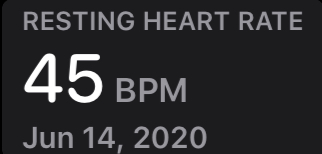And
I think that is why and my thoughts get fixated on Dr. Fung’s words in his interview about three meals a day being burned into our brains? Then think WHO? is telling us we have to eat three meals a day; not unless your being strapped and harnessed to a horse wagon and pulling carts loaded with boxes of heavy stuff all day long?
When I look at the research on RMR/BMR/REE it seemingly can be controlled through diet and fasting?
Reading Dr Fung’s transcripts are like Zen:
”…Let’s talk about the basal metabolic rate changes during fasting. So during fasting, what you see in this study was over four days of fasting, you can see the weight is steadily dropping, which is what we expect, and then the REE, which is the Resting Energy Expenditure actually goes up over four days of fasting. If you measure how many calories somebody is expending [00:00:30] after four days of not eating anything, it’s actually 10% higher than when he started. The body isn’t shutting down which is something that you hear all the time, oh, the body’s going into starvation mode, it’s shutting down. It doesn’t shut down, it ramps itself up.
If you look at VO2, which is a measure of how much work the body is doing, again, it goes up by about 10%, sort of confirming this increase in energy expenditure. The reason is simple to understand. [00:01:00] If your noradrenaline is going up, you’re going to be expending more energy. Sympathetic tone goes up, so remember the sympathetic nervous system is a general activation of the body, so-called fight or flight response. If you see a lion, for example, your sympathetic nervous system shoots way up, and then you pump a lot of energy into your body so that you can run away or fight. This is a very mild stimulus to the sympathetic tone, but again, it’s activating the body, not shutting it [00:01:30] down.
If you look at the next slide, what you see is a study where they did people, they took people and put them on 22 days of alternate daily fasting, and what you see is that the resting metabolic rate, the RMR goes from 6675 to 6329, but that’s not significant, so again, no drop in basal metabolic rate. What you see is that increase in fat oxidation and an decrease in carbohydrate oxidation. So you’re switching from burning sugar to burning fat, [00:02:00] which is perfect, because that’s what we want to do. We want to burn our body fat. We want to burn it at the same rate that we were burning it before. We just want to use up that fuel.
This study from 2016, again, compared CR which is chronic calorie restriction, so the sort of standard advice, cut 500 calories a day sort of advice to ADF, which is alternate daily fasting. If you look at the adjusted resting metabolic rate, the adjusted RMR in the [00:02:30] box, what you see is the CR group, the calorie restriction group dropped their metabolic rate by 76 calories per day, which is statistically significant. The alternate daily fasting group dropped it by 29.2 with a p value of .4, which is actually not statistically significant.
In other words, what the study shows is if you simply cut your calories, your metabolic rate is going to go down and that’s [00:03:00] bad because you’re not burning as much calories. If you do the fasting, on the other hand, there’s no statistically significant drop in your basal metabolic rate, which is good because now, one, you’ve switched over to burning fat, but you’re burning it at the same rate you were before. …” …More
 I still suspect the nasty virus I had in January caused some damage that raised my BP, but I will never be able to prove that. Anyway, one of my sons gifted me a Fitbit a couple of months back and I’ve been wearing it faithfully. It now shows my resting heart rate going as low as 43 while I sleep.
I still suspect the nasty virus I had in January caused some damage that raised my BP, but I will never be able to prove that. Anyway, one of my sons gifted me a Fitbit a couple of months back and I’ve been wearing it faithfully. It now shows my resting heart rate going as low as 43 while I sleep.
 I do feel good, so I think I’m healthy. Just wanted to know if other people on Keto know something I don’t and should.
I do feel good, so I think I’m healthy. Just wanted to know if other people on Keto know something I don’t and should.

